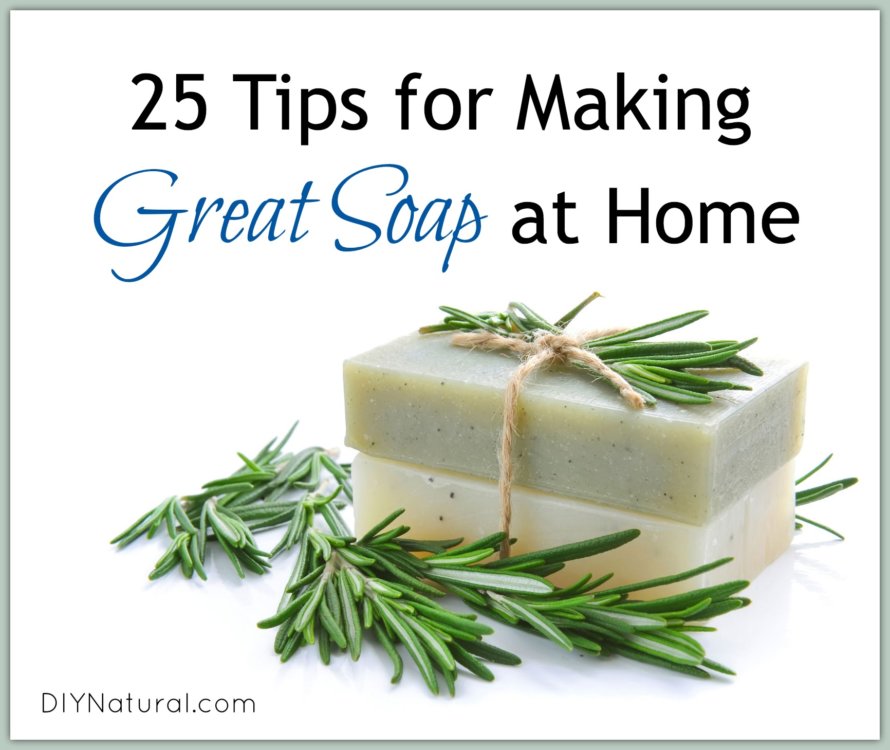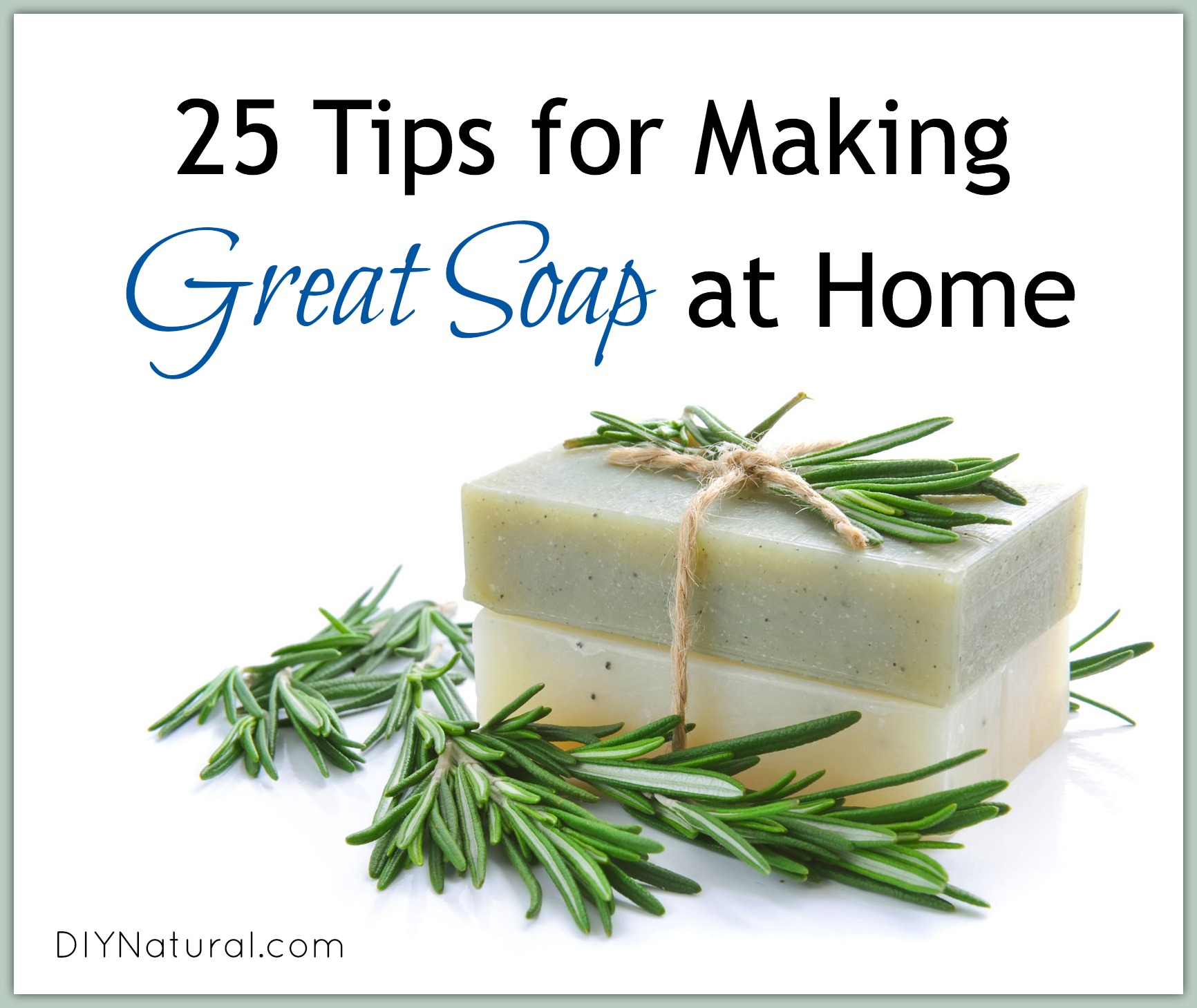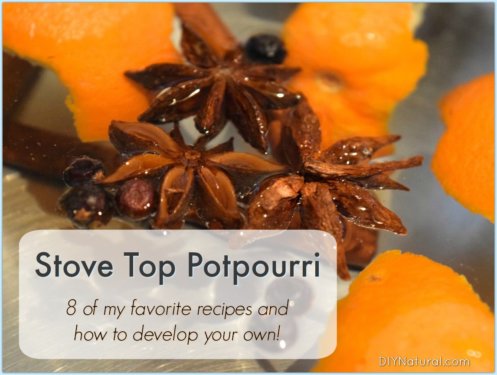
Learn 25 excellent tips for making soap from expert soap maker Deb Maslowski. Her advice will help you avoid pitfalls and make great soap!
By now you all know I’m a soap maker.
Any free time I have I spend making, unmolding, wrapping, or researching how to make soap at home. Ok, so I do spend time in my herb garden, but then the herbs are dried to put into the soap.
Along the way, I’ve found many things that either work or don’t. A few months ago I shared some of my best tips with you (see them here), but then I realized that I had left some out. So here are 25 MORE tips to make your soap making life easier!
Tip: if you’re wanting to make a moisturizing soap for your hands and body, read our how to make soap article. And here is a good recipe for general cleaning soap.
25 More Soap Making Tips
- Pay attention to your stick blender (aka immersion blender). If the noise changes drastically (some change is normal, but a screeching or grinding noise is not!), or if it heats up considerably, stop. Either let it cool down or switch to using another one.
- If you’ll be doing a lot of soap making, get another stick blender so you can switch as mentioned above. (Look for them at thrift stores.)
- When you’re blending your soap, keep going until all of the graininess is gone. I used to stop as soon as it was thick enough, fearing it becoming too thick to handle. And sometimes my soap was crumbly. I discovered not too long ago that if you keep going until your soap is creamy and not at all grainy, it will turn out nice and smooth nearly every time.
- Infuse natural color into your oil with turmeric, cocoa, or cinnamon. Use this oil as a base oil, not as an additive for more color punch.
- Use herbs that are in season for the freshest scents and best value.
- Turmeric is also an antioxidant, stalling rancidity in soap.
- Cover your scale with plastic wrap to keep oil from getting inside and store it inside a zippered plastic bag.
- Don’t worry so much about temperatures. I used to agonize about getting everything just right. Now I prepare the lye ahead of time and warm the oils just enough to melt them. It works just fine.
- Do you have a really cool mold that just won’t sit flat on the table? Take a kitty litter pan (unused) and fill it half full with sand. Make indentations where the lower parts of the mold are and settle them down inside. (This works great for candle molds too.)
- Laminate your soap recipes so that you can wipe off any spills.
- Use dry erase markers to make changes to your laminated recipe until you can print out a new one.
- Take an old towel and cut it into washcloth-sized pieces. Keep them handy for spills.
- Be sure to soak all of your soap making equipment before you put any of it in the dishwasher. Just a bit of excess soap will lead to tons of suds!
- Label everything! I always think I’ll remember what type of soaps I’ve made, but sometimes I don’t.
- Mix up 3-4 batches of oils at a time. Weigh out all of one batch so you know how much you’ll need. Then when you go to make soap the next time, just pour out what you need.
- Place a clear tablecloth from the dollar store on top of your work surface. Clean up is a snap!
- Have some soap that works great but is just blah? Wrap a few pieces in colored paper (be sure it’s non-toxic!) and place them in a zippered plastic bag for a few days. You’ll get some interesting patterns.
- If you’re experimenting with additives, try a batch of melt and pour soap to see how you like the new additives. Or try a half-batch of cold process so too many ingredients don’t get wasted if you don’t like it.
- Never add water to lye, always add lye to water. Adding water to the lye can cause a massive heat build-up and can lead to an explosion.
- Measure the weights of all of your containers and write them on the bottom. If you forget where you are, you can weigh the whole thing and subtract the container to see what’s left.
- Label all of your equipment for soap making so it doesn’t get mixed up with your cooking utensils. I used to think that if I cleaned it enough it would be ok. It’s soap, right? Not true. Lye can etch glass and weaken it and plastics can carry the smell and color forever.
- To get easy swirls, treat your soap base like a cake mix. Pull out about 1/3, add color and plop it back onto the top of the rest of the soap. Take a knife or a spatula and make swirls, making sure to hit the bottom as well as the top.
- Carrot seed oil and rosemary extract will also act as preservatives.
- Take a bit of color and dab it onto a flannel cloth. Rub the top of the soap with it like rubbing furniture. This works great with mica.
- If you’re working with well water, use a bit more lye. If you don’t, lye will eat the minerals first and there may not be enough to make the oil into soap, and your soap may come out greasy and soft. Or just use distilled or rainwater.
Have you come across any good soap making tips?
If so, share with us in the comments section!
*******




Enjoy your articles!! What is the name of the lye calculator site you use…..seems to be missing..Thanks!
Sorry, Let, I forgot to mention it. It use the one at either Majestic Mountain Sage or Brambleberry. They are both great. There are a great many out there. You can Google “lye calculator” and you’ll get a number of hits. And Tammy is right, sometimes the amounts don’t seem right. Do your adjustments and go from there. I’ve made small experimental batches to be sure of the weights.
I am very confused about you soap. Nothing that has LYE in it is safe and healthy. There are plenty of wonderful safe, healthy and natural soaps out there that don’t have lye in them. I would never, ever, put lye on my body.
You can’t make soap without lye–even melt and pour soap bases are made with lye.
This is an excellent post with great tips for cold processed soap making. Thanks for sharing! I mean this in the most respectful way, but @Minette, I suggest you do some research on soap making and the ingredients involved. Unfortunately, you’re a bit mis-informed. You absolutely do need lye for cold processed soap making. Even the melt & pour varieties contain it. Please educate yourself on the subject and art of cold process soap making!
Thanks Matt and Ashley! You’re both right. ALL soap, liquid or solid, contains lye in some form. When the soap is completely done, or saponified, there is no oil, no water and no lye left in it. It’s like making a cake. When you’re done, there is no egg or flour, just cake. I hope this helps explain things, Minette.
Debra, while I appreciate your ability to make soap, your cake reference is not at all correct or helpful. To say when it is done there is nothing left, like eggs or flour? That’s not at all correct, just like the lye. When a person has a food allergy they can not eat that item if it contains any ingredients that they are allergic to. So you see, with all due respect to everyone that has responded to me, I am not the one that needs to be educated here. The products that I choose to use are safe and healthy. No lye. That is all I was saying. Unfortunate that people get so upset. Be well.
Hi Minette, I just wanted to say that, reading through the responses here, it did not sound to me as though anyone is upset. I think Debra’s point was that when the lye and oils mix there is a chemical change at the molecular level that makes the lye not lye anymore, just as the oils are not oils anymore. When this molecular change is complete, there truly is no lye left in the soap. There is only the substance that we call soap. Also, the word “lye” would most likely not be on an ingredient list. Depending on the type soap it would be listed as either sodium hydroxide or potassium hydroxide.
I think we would all agree that there are many skin care products that do not contain lye. After all, a product does not have to be a soap in order to clean the skin (i.e. the oil cleansing method). However, please do not equate the use of lye soap with a lack of safety. There is nothing unsafe about it at all.
In fact, since I began using homemade lye soap 10 months ago, my skin is healthier than it has been my entire adult life. For the first time in more than 35 years the skin on my legs does not look like alligator skin if I go a day or two (or a week) without using moisturizer, nor do I have that constant all-over-the-body itching that I thought I would never get rid of. I have also formulated a face bar that is both gently cleansing and conditioning; it leaves my face feeling soft and supple.
Yes, in it’s normal state lye is a caustic chemical. However, once it has interacted with oil the substances radically change and bond together in a manner that makes using lye soap completely safe, and even healthy, for the human skin.
I have made my own soap for years. My recipe makes 30 bars. I used to have a recipe that made a very small batch. Is there a website I can go to that will break down my recipe for a small batch and tell me what size of box to pour it into? Thank you.
I use this site to calculate the amount of lye & oils to use. You simply enter the percent of water and the percent of superfat for your recipe, then choose the amount of each oil you want to use. Click on Calculate Recipe and then View or Print Recipe. It will open a new window that has all your ingredients, including the amount of lye to use.
If the proportions don’t look right to you, simply go over into the first window and adjust your water or superfat percentages. You will need to click on both Calculate Recipe and View or Print Recipe again. This will not open another new window, but when you go over to the recipe window it will have the new percentages calculated for you.
This is my favorite lye calculator because of how well much information it gives about the different oils.
Helps if I give the link…
http://www.soapcalc.net/calc/SoapCalcWP.asp
Rosemary oleoresin works as an antioxidant and also prevents discoloration or spots in your soap. Also, after I pour my soap, I cover it and insulate it with towels or old blankets for 24 to 48 hours, then cut it. This helps with the cure time too.
Thanks, Robbie. I’ve never used ROE, but I’ve heard of it. Most of my soaps don’t have a problem, but I have one I do for a client that has a very short shelf life. I’ll give it a try. And thanks for the tip with the towels. I’d forgotten that one!